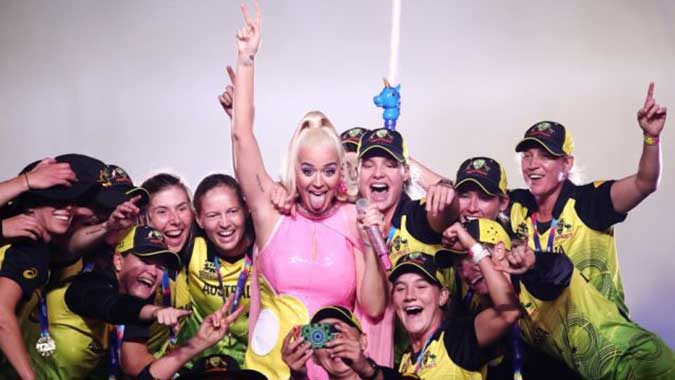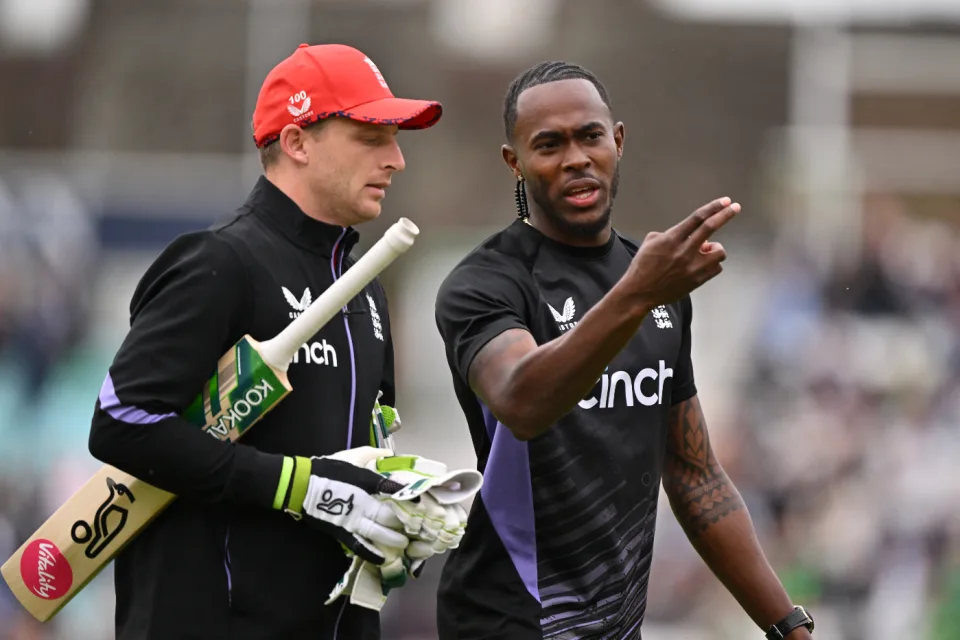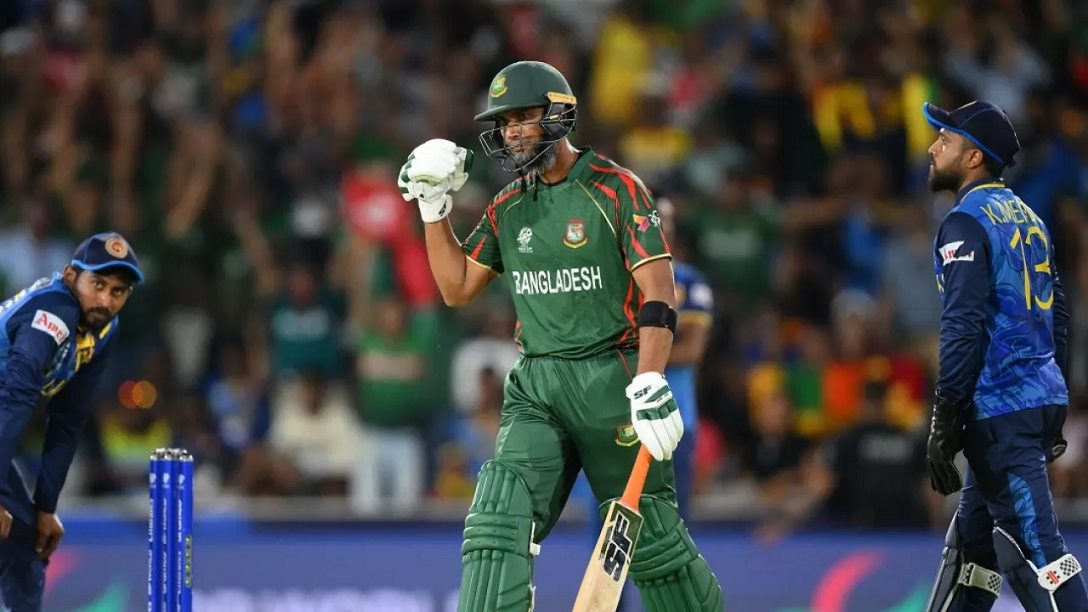Sports
An indicator of the lay of the land and a boost for South Africa, the country

There is no better time to be a women’s cricketer. There’s more playing opportunities and professionalism than ever before; more money, more interest and more attention on the game than at any time in its history and naturally, more at stake.
The T20 World Cup is among the game’s biggest prizes, and this one, the first since a packed MCG told us women’s cricket was hitting all the right notes, is particularly significant. A pandemic has come and (almost) gone since that memorable day and the women’s game suffered disproportionately because of it. FICA’s Women’s Global Employment Report noted that as tours and fixtures were cancelled over the next 18 months, only five countries – Australia, England, India, New Zealand and South Africa – maintained their pre-pandemic playing days while the rest of the ODI nations’ matches halved. In essence, this is the dividing line that defines the next phase of the professionalism of the women’s game: who gets ahead and who gets left behind. This World Cup will serve as an indicator for the lay of the land.
But it is also – and you wouldn’t ordinarily say this about a World Cup – a shop window of sorts. The WPL auction will take place on day four of the tournament, after nine of the 10 teams (Ireland are the exception) will have played their opening matches. The performances in that first round could change the lives of players who end up securing big-money deals and the WPL as a whole is likely to change the landscape of the women’s game and perhaps, even reduce the gaps in the international game which stem from differences in infrastructure and investment.
The best and the rest
As far as this World Cup goes, there’s a clear front-runner: Australia. It could turn out that the real competition will take place between England, India, New Zealand, South Africa, West Indies, Bangladesh, Pakistan, Sri Lanka and Ireland to decide who will lose to Australia in the final rather than a competition for the trophy itself. That’s not to put a damper on things but we have to be realistic and acknowledge how far ahead of the pack Australia are. FICA called them the “global leader in the women’s game,” as they’ve been to six of the seven T20 World Cup finals, won five, and they have only been beaten twice (once in a Super Over) between their 2020 T20 World Cup win and the start of this tournament.
But there is one thing that may prove challenging for the defending champions. Australia have never played a T20I in South Africa and have only toured the country for one white-ball tour – the 2005 Women’s World Cup – and yes, they won that too. That competition was held upcountry while this one will be played in the Western and Eastern Cape, venues that are completely foreign to Australia. They came in expecting pace and bounce and have been surprised by the slow nature of the coastal wickets including the tired Newlands surface where they beat India in their first warm-up match on Monday.
Australia and India are the only two teams to have been given a practice match at a World Cup venue, and it was on Australia’s request – because they play no group matches at Newlands and expect to make the semi-finals, which will both be played there – and have been given some opportunity to get to grips with the surfaces. They may not be entirely to Australia’s liking, which could tilt the balance, but probably only slightly.
As for the challengers, India, buoyed by their Under-19 Women’s T20 World Cup win and the WPL on the horizon, and England, ranked second, are the obvious candidates but don’t count out at least two others. New Zealand were the only team to beat Australia in a regular T20I in the last three years and have a good mix of youth and experience. South Africa, apart from being the hosts, are two-time semi-finalists and believe this to be their full circle moment. Their coach Hilton Moreeng is in his 10th, and likely last, year in charge and has overseen their full transition: from amateur to professional to pushing for major tournaments, and deserves a crowning moment send-off. The Dané van Niekerk saga aside, South Africa have a strong outfit with several match-winners, who will want to make the most of their opportunity to do something special in their backyard.
This time for (South) Africa
Upto the point that Shakira sang those words to open the 2010 Football World Cup, South Africa was considered a premier destination for major sporting, and especially cricketing, events. It had hosted the 2003 Cricket World Cup, the 2007 T20 World Cup, the 2009 Champions Trophy and the IPL that year. Since then, South Africa has fallen away sharply as ageing infrastructure and high-level corruption have left the country on the brink of being labelled dysfunctional. There have been rolling electricity blackouts every day since Christmas 2022 and for a record number of days last year. The World Bank ranks it as the most economically unequal country on earth and Forbes magazine has rated South Africa as the most dangerous place for female travellers. Yet, here we are.
This year, South Africa has launched its own franchise T20 league, played host to the inaugural Under-19 Women’s T20 World Cup, it’s about to host the senior Women’s T20 World Cup, and will host the Netball World Cup in the winter. The costs of keeping the lights have all been borne by the tournament organisers, with the ICC funding the generators that will be used at Newlands, Boland Park and St. George’s Park over the next two weeks. The country’s premier sports broadcaster, SuperSport, who still largely hire women in a decorative rather than substantive role, have changed their tagline to “Here for Her” in a bid to show their support for women’s sport. They broadcast more of it than ever before and given their presence on the continent as a whole, that means women’s sport is getting extensive exposure and it also affords the opportunity for South Africa to celebrate women.
It is also a chance to enjoy South Africa’s stadia, which, as Eoin Morgan told ESPNcricinfo while playing for Paarl Royals at SA20, still carry a certain charm because of the grass embankments. While grounds in other parts of the world are entirely built up, Newlands, Boland Park and St. George’s Park all retain an informal atmosphere, where picnic blankets can be laid down, umbrellas and gazebos put up and a proper party had. And there’s every chance of that happening. The Women’s T20 World Cup comes in the midst of a summer where locals have regained their love of cricket (thanks, in no small part, to that SA20) and are filling stands with a fervour not seen before. Ticket sales are said to be progressing steadily and decent crowds are expected throughout with the municipalities in Cape Town, Paarl and Gqeberha also doing promotional work.
The City of Cape Town – the municipality of the city – has taken ownership of the bulk of the marketing and on Saturday held a beachfront event, with all 10 teams present, to launch the tournament. Each captain was gifted an individual and locally significant trinket. Heather Knight got a doek (an African head scarf) and was shown how to tie it, Hayley Matthews was given a skirt, Laura Delaney got a beaded necklace and Harmanpreet Kaur, an apron, although it’s understood she does not cook. Well meaning as the City was, their item of choice for the South African captain was, let’s say, hopefully ironic rather than symbolic. Sune Luus was given a wooden spoon (and fork).
Still, there’s no better time to be a women’s cricketer, Luus confirmed at the captain’s press conference, especially a cricketer leading her team in a home World Cup.
(Cricinfo)
Sports
England face Australia in the battle of champions

The first truly heavyweight clash of this expanded T20 World Cup format comes freighted with both history and subplots. A rematch of the 2010 World T20 final at Kensington Oval, the match pits Jos Buttler’s defending champions – who are aiming to become the first team to retain the trophy – against the Australian winning machine, victors at the 2021 edition and current world title-holders in Test and ODI cricket. And that’s before you throw in the Ashes for afters.
Already there is added pressure on England, after the rain in Bridgetown led to a share of the points in their opener against Scotland (and that having conceded 90 runs from 10 overs without taking a wicket in a tepid bowling display). Lose to their oldest rivals and it will leave their Super 8 prospects open to being waylaid by the perils of net run-rate calculations, or worse.
The Scotland match was the third abandonment in five suffered by England, after a rain-affected home series against Pakistan, which has clearly hampered their readiness for this campaign after almost six months without playing T20 together. It does not take much for a side to click in this format – and England looked in decent shape when they did get on the field against Pakistan – but Buttler will be anxious for things to go their way on Saturday, if only to avoid further questions referencing the team’s disastrous ODI World Cup defence last year.
Australia, under the laidback leadership of Mitchell Marsh would love nothing more than to add to the English sense of jeopardy – having helped bundle them out of the tournament in India on the way to taking the crown. Their head to head record is less impressive in T20 however, with England having won six of the last seven completed encounters, as well as that 2010 final.
Despite a wobble with the bat, Australia avoided mishap against Oman earlier in the week, the experience of David Warner and Marcus Stoinis shining through in difficult batting conditions. Surfaces in the Caribbean – not to mention those games staged in the USA – have already had teams scratching their heads; rather than the “slug-fest” England had prepared for, following a high-scoring tour of the Caribbean in December, it looks as if boxing smart may be the way to go.
Speaking of Warner, this could be the last time he faces up against England in national colours – and another match-winning contribution would likely reduce the chances of them meeting again in the knockouts. On the other side of the card is Jofra Archer, fresh from an emotional maiden outing at Kensington Oval and ready to take on Australia for the first time in any format since 2020. Can Mark Wood fire up England’s campaign, as he did during last summer’s Ashes? Will Pat Cummins be back to harass the old enemy once again? Seconds out, it’s almost time to rumble.
Cummins is set to return after being rested for the Oman game, which saw Mitchell Starc leave the field with cramp. Starc is understood to be fine and could keep his place – which would likely see Nathan Ellis miss out. Marsh is still not fit to bowl, with Australia likely to continue with the allrounder combination of Stoinis and Maxwell to give them cover.
Australia (probable XI): David Warner, Travis Head, Mitchell Marsh (capt), Glenn Maxwell, Marcus Stoinis, Josh Inglis (wk), Tim David, Pat Cummins, Nathan Ellis/Mitchell Starc, Adam Zampa, Josh Hazlewood
The one change England may consider is Reece Topley coming in for Wood, with the expectation that there will be some rotation among the seamers through the course of the tournament.
England (probable XI): Phil Salt, Jos Buttler (capt & wk), Will Jacks, Jonny Bairstow, Harry Brook, Liam Livingstone, Moeen Ali, Chris Jordan, Jofra Archer, Adil Rashid, Reece Topley/Mark Wood
[Cricinfo]
Sports
South Africa up against their bogey team in batter-unfriendly New York

Once is coincidence, twice is a clue, and three times is proof.
To paraphrase Agatha Christie, that is the narrative around South Africa’s meeting with Netherlands at this T20 World Cup.
The Dutch beat South Africa at the 2022 tournament and ended their semi-final hopes in a match where South Africa appeared to be sleep walking, and then beat them again at the 2023 ODI World Cup, where they exposed South Africa’s vulnerability in the chase. If they to do the treble, not only will Netherlands take the lead in Group D, but they will offer conclusive evidence of the threat they pose to Full Members, especially South Africa.
Of course, it will take some doing after South Africa’s opening performance against Sri Lanka, where they reduced their opposition to their lowest T20I total and chased it down in fairly straightforward fashion thanks to the most stable middle-order of their white-ball era. In Aiden Markram, Tristan Stubbs, Heinrich Klaasen and David Miller, South Africa have bankers and big-hitters and, for this match, they also have the advantage of experience. They’ve already played at Eisenhower Park, and have first-hand knowledge that run-scoring doesn’t come easily;Klassen said they are prepared to use their “cricket brains” and play “smarter cricket”.
But the conditions could be good news for Netherlands, who are not naturally a line-up of big hitters and build their innings on a foundation of turning ones into twos. In other words, they tend to take a slightly more conservative approach to batting, which may work well here, but they’ll be wary of the uneven bounce of the surface and will have to come up with plans to counterattack especially against South Africa’s seamers. Their own bowlers were exemplary in Dallas and will look to build on that performance against a line-up that will likely be more proactive than Nepal’s, but who they have managed to keep quiet not once, but twice in the past. Third time’s the charm, they say.
Anrich Nortje’s stunning return to form against Sri Lanka means South Africa may not have to tinker with the bowling combination, and Gerald Coetzee and Tabraiz Shamsi may have to wait their turns to get a game. The batting line-up should be unchanged, with no space for Ryan Rickelton yet.
South Africa: Quinton de Kock (wk), Reeza Hendricks, Aiden Markam, Tristan Stubbs, Heinrich Klaasen (wk), David Miller, Marco Jansen, Keshav Maharaj, Kagiso Rabada, Ottneil Baartman, Anrich Nortje
Conditions in New York may tempt Netherlands to include an extra seamer and they have Kyle Klein in their squad. But it could come at the expense of a shortened batting line-up and they may not want to risk that.
Netherlands: Michael Levitt, Max O’Dowd, Vikramjit Singh, Sybrand Engelbrecht, Scott Edwards (capt, wk), Bas de Leede, Teja Nidamanuru, Logan van Beek, Tim Pringle, Paul van Meekeren, Vivian Kingma
[Cricinfo]
Latest News
Mustafizur, Rishad, Hridoy dazzle in Bangladesh’s tight two-wicket win over Sri Lanka

Nuwan Thushara’s last over brought Sri Lanka screaming back into the match,as he first bowled Rishad Hossain, and then nailed Taskin Ahmed in front of the stumps with a pinpoint swinging yorker. This left Bangladesh eight wickets down, with 12 runs still to get.
However, the experienced Mahmudullah was at the crease for Bangladesh, and despite some further nervy moments, pushed Bangladesh across the line off the last ball of the 19th over.
But this was a match chiefly decided by Bangladesh’s own outstanding bowling. Mustafizur Rahman was the best among them, using shorter lengths and his cutters efficiently, to claim figures of 3 for 17. Rishad Hossain’s three-for through the middle overs also kept Sri Lanka quiet.
Mustafizur was instrumental in Sri Lanka’s downward spiral through the middle overs, which culminated in a crash-and-burn end. Ultimately, their inability to find boundaries, or even rotate strike against good Bangladesh bowling resulted in their downfall. A score of 125 for 9 always seemed poor on a decent pitch, even if their bowlers made a match of it in the end.
Brief scores:
Bangladesh 125 for 8 in 19 overs (Towhid Hridoy 40, Litton Das 36; Dhanajaya de Silva 1-11, Nuwan Thushara 4-18, Wanidu Hasaranga 2-32, Matheesha Pathirana 1-27) beat Sri Lanka124 for 9 in 20 overs (Pathum Nissanka 47, Dhananjaya de Silva 21; Tanzim Hasan Sakib 1-24, Taskin Ahmed 2-25, Mustafizur Rahman 3-17, Rishad Hossain 3-22) by two wickets
[Cricinfo]












